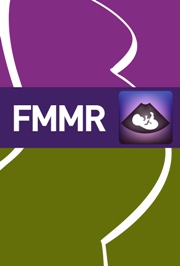No CrossRef data available.
Article contents
DIAGNOSTIC MARKERS IN NEONATAL SEPSIS
Published online by Cambridge University Press: 01 February 2007
Extract
Breakthroughs in the management of sick newborns, including exogenous surfactant therapy, advance ventilation techniques, inhaled nitric oxide, and use of antenatal corticosteroids have led to substantial improvements in the survival of vulnerable preterm infants. Neonatal clinicians now have access to an ever increasing armament of antimicrobial agents to help combat infections. However, even with the support of such advanced therapeutic modalities, strict infection control measures and low thresholds for use of broad-spectrum antibiotics, the threat of bacterial infections especially in the most susceptible group of preterm, very low birth weight (VLBW) infants have persisted. A recent survey suggests that a significant proportion of VLBW infants (21%) have at least one episode of late-onset culture proven sepsis during their stay in the neonatal unit. Infected infants require longer hospital stay and have higher risk of developing complications, such as bronchopulmonary dysplasia and adverse long-term neurodevelopment. Neonates with infection often present with subtle and non-specific signs of sepsis. Some may be asymptomatic at the initial stages of infection. Even those infants with signs may not be clinically distinguishable from patients suffering from transient tachypnoea of the newborn, respiratory distress syndrome, apnoea of prematurity or acute exacerbation of bronchopulmonary dysplasia, during early phases of the disease. Such presentations can lead to both delayed treatment of genuinely infected infants and indiscriminate use of antibiotics in non-infected cases, resulting in acceleration of emergence of bacterial resistance, alteration of patterns of bacterial infection, and inefficient treatment of septicaemia. Both early and late-onset infections are important causes of neonatal morbidity and mortality. Methods to assist neonatal clinicians diagnose infants in the early stages of infection are, therefore, highly desirable.
- Type
- Research Article
- Information
- Copyright
- Copyright © Cambridge University Press 2007


